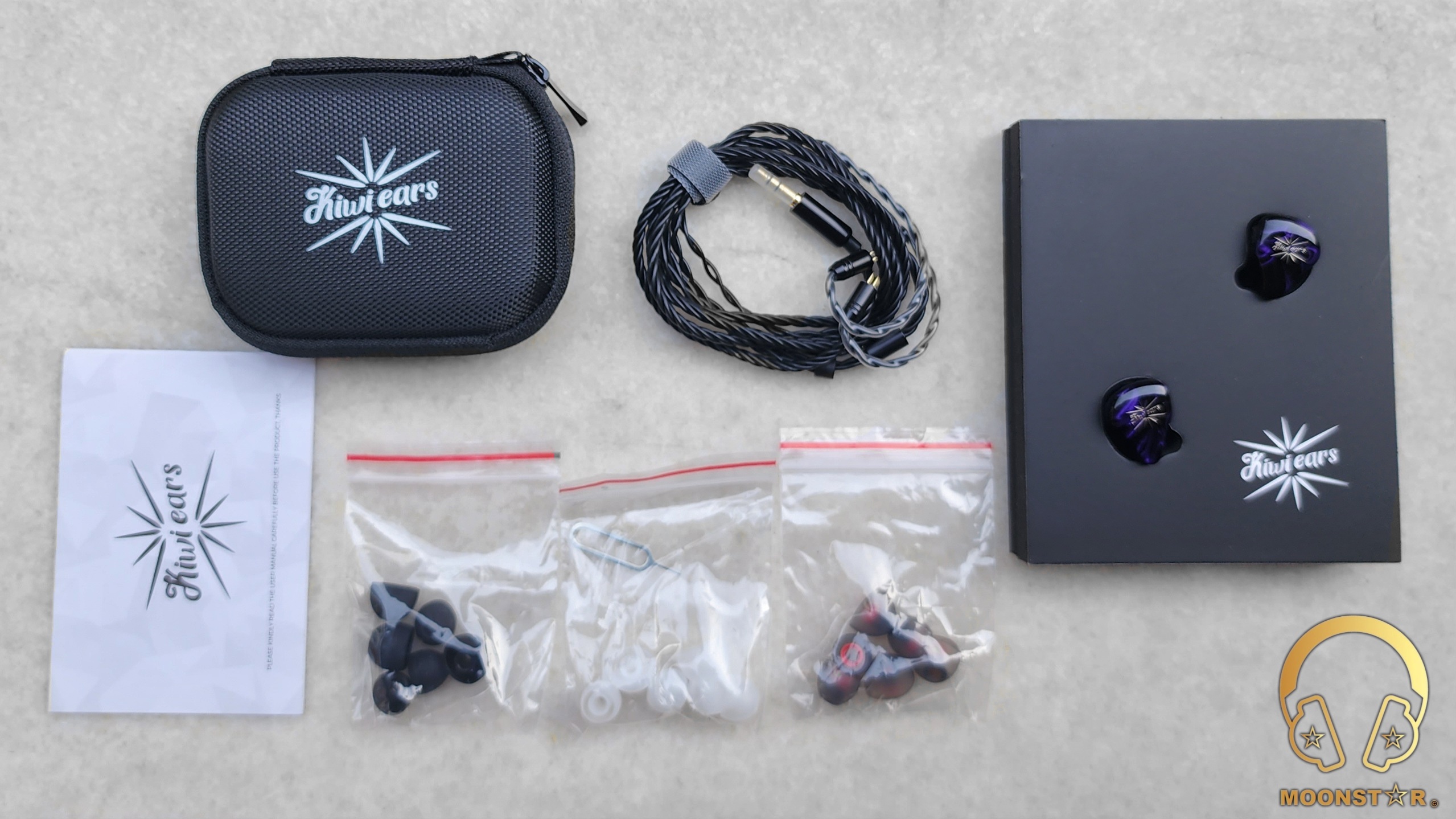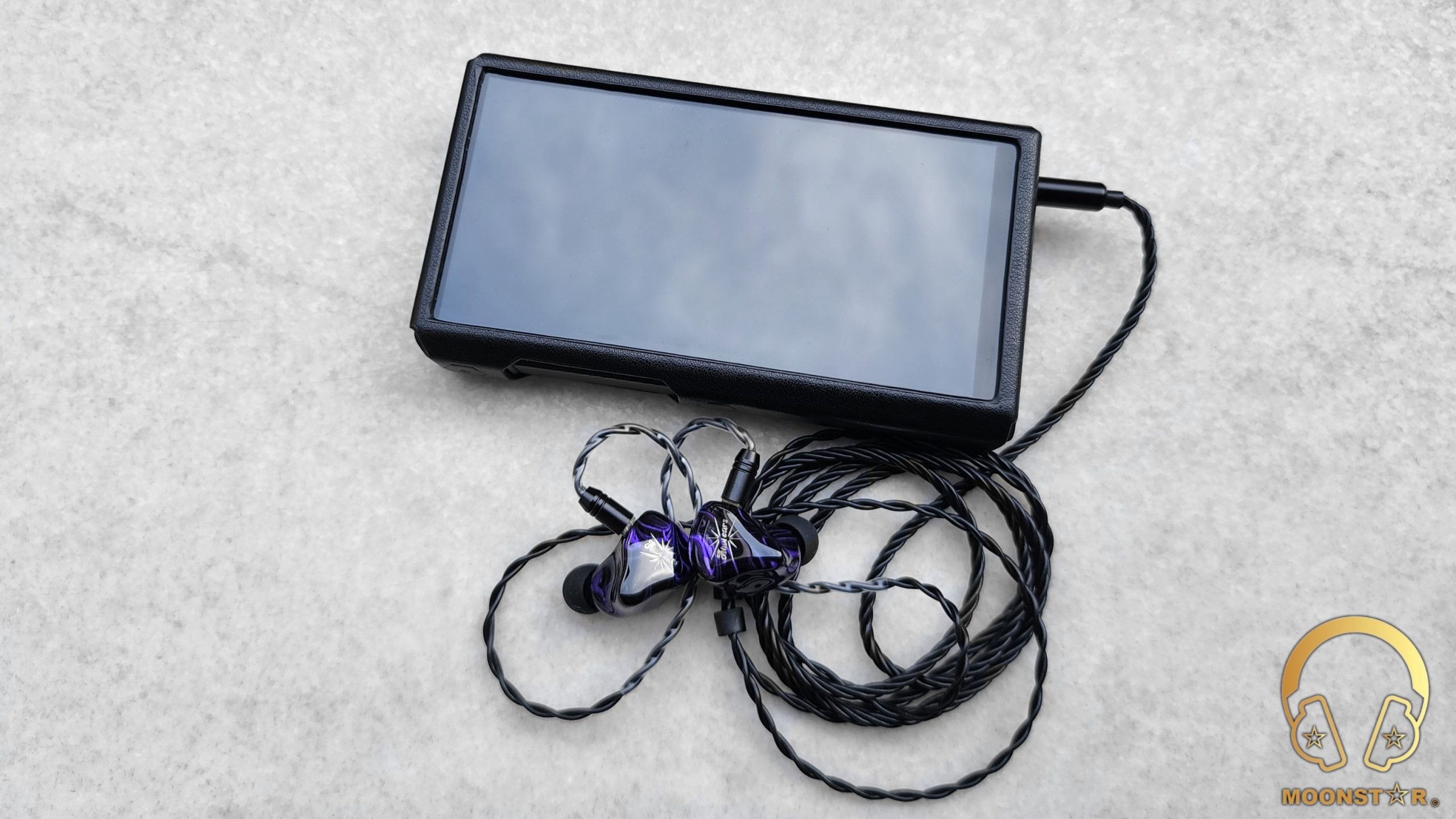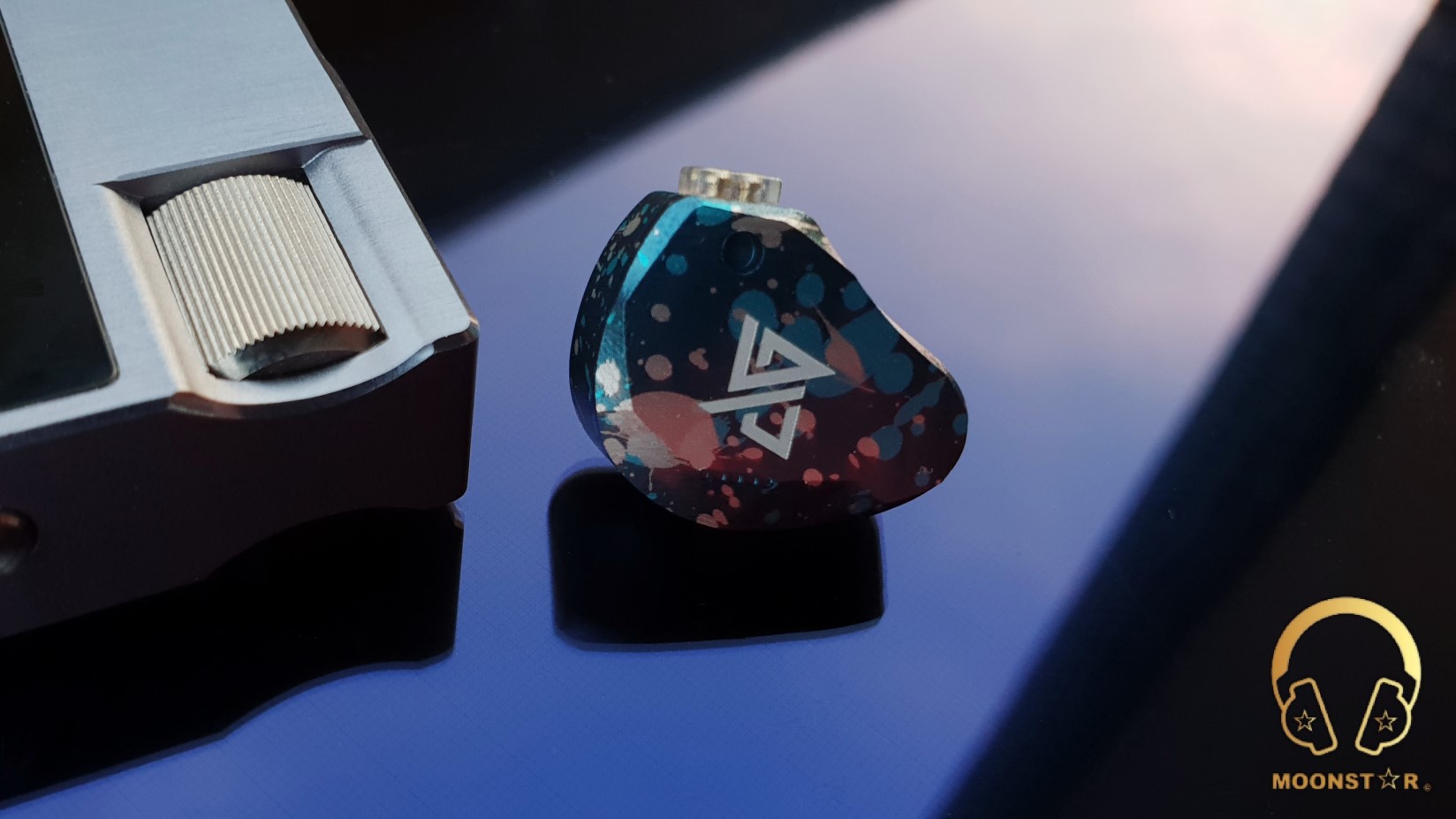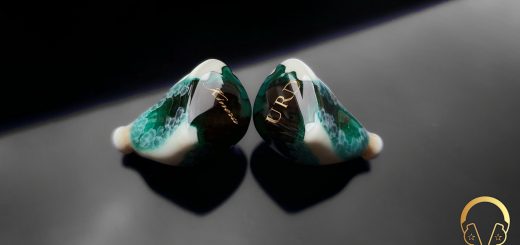Kiwi Ears Quartet Review

Kiwi Ears Quartet Review
Introduction:
Kiwi Ears is Chinese brand that is specialized in the production, design and development of In-Ear Monitors for audiophiles, sound engineers and musicians. The motto of the brand is “LIVE THE MUSIC”.
The Quartet that I will now review for you is a Hybrid Driver In-Ear Monitor that is equipped 4x Drivers per ear piece, which is a combination of 2x Custom Balanced Armature Drivers dedicated for the mids, highs and ultra-highs, while 2x 10mm diameter Titanium Diaphragm Dynamic Drivers that are driven by Dual Magnetic Circuits are responsible for the lower frequency areas. These drivers are located inside semi-custom resin shells that do have a 2-Pin connector interface on the top and 2 sound tuning switches located at the rear side.

Disclaimer:
I would like to thank Linsoul and Kiwi Ears for providing the Quartet In-Ear Monitor for review purposes. I am not affiliated with Linsoul or Kiwi Ears beyond this review and these words reflect my true and unaltered opinions about the product.
Price & Availability:
The actual price of the Kiwi Ears Quartet In-Ear Monitors is $109.00 USD. More information’s can be found under the link below;
Package & Accessories:
The Kiwi Ears Quartet came inside a pretty small box with the Kiwi Ears branding on the top that was warped with a cardboard sleeve that sports the product illustration and some product related brandings on the top.


Inside the box of the Kiwi Ears Quartet are the following contents/accessories;

- 1 x pair of Kiwi Ears Quartet In-Ear Monitors
- 1 x Detachable Cable with 2-Pin Connectors
- 9 x pairs of Silicone Ear Tips
- 1 x Zipper Case
- 1 x Print Material


Design and Build Quality:
B. Monitors:
The Kiwi Ears Quartet is an eye-catching In-Ear Monitor with a pretty small size and lightweight design that has a semi-custom shaped resin shell. Each monitor unit is using medical-grade resin material with a color combination of Violet and Black, which has been hand crafted, cured and polished.

The faceplate of each monitor sports the Kiwi Ears brand logo in sliver color.

The inner surface of the monitors features a sound nozzle with two opening on the top, one for the 2x Custom Balanced Armature Drivers, while the second one is dedicated for the 2x 10mm diameter Titanium Diaphragm Dynamic Drivers.

On the top of the monitor shells are the 0.78mm diameter 2-Pin female connectors that do show a tight and secure connection.

At the rear side of each monitor shell are 2 tiny switches that have markings (ON-KE & 1 – 2) to guide you while tuning the sound. You have the option two switches between 4 possible tuning styles, which is a nice feature.

The build quality and optical impression of the monitors is decent!

B. Detachable Cable:
The Kiwi Ears Quartet comes with detachable cable that is made of oxygen-free silver-plated copper material, which has a black insulation and a braided design.

The detachable cable is pretty lightweight and shows only a very low amount of microphonic effects.

The detachable cable comes with 0.78mm diameter 2-Pin male connectors that are protected with a metal housing in black color. The right connector has a red color indicator while the left side is transparent.

The cable sports a 3.5mm headphone plug that is protected with a straight profiled metal housing. The housing features a plastic strain relief for extra durability.

Fit, Comfort & Isolation:
The Kiwi Ears Quartet is a pretty small and lightweight In-Ear Monitor with a pretty ergonomic semi-custom like shape that didn’t hurt my average sized ear concha even after long listening periods. The passive noise isolation on the other hand is on an efficient level, ideal for the use in relative noisy environments such like a bus or train.

Technical Specifications:
- Model : Quartet
- Driver Technology : 2x BA + 2x DD Hybrid Driver Configuration
- BA Driver : 2x Custom Balanced Armature Drivers
- Dynamic Driver : 2x 10mm diameter Titanium Diaphragm Dynamic Drivers
- Frequency Response : 20Hz ~ 20 kHz
- Sensitivity : 110dB
- Impedance : 32Ω
- Cable Material : Oxygen-free silver-plated copper
- Connector Type : 0.78mm Diameter 2-Pin Connector
- Plug : 3.5mm Single Ended
- Cable Length : approx. 120cm

Drivability & Pairing:
The Kiwi Ears Quartet is a fairly efficient In-Ear Monitor with an impedance of 32Ω and a sensitivity of 118dB. This makes it compatible with relative weak sources like Smartphone’s, Tablet’s and MP3 players.

Equipment’s used for this review:
IEM’s : Kiwi Ears Quartet, TRI Meteor
DAP&DAC’s : FiiO M11 Plus ESS, HiBy R3 II, FiiO KA5

Albums & tracks used for this review:
- Adele – My Little Love (Spotify)
- Randy Crawford – On Day I Will Fly Away (Flac 16bit/44.1kHz)
- Hayley Westenra – Odyssey Album (Dezzer HiFi)
- Dionne Warwick – Walk On By (Flac 16bit/44.1kHz)
- Sarah McLachlan – Angel (Flac 24bit/48kHz)
- Sertap Erener – Aşk (Flac 16bit/44.1kHz)
- Edith Piaf – Non Je Ne Regrette Rien (Flac 16bit/44.1kHz)
- Diana Krall – So Wonderful (DSF)
- Aretha Franklin – I Say A Little Payer (Flac 24bit/96kHz)
- Sonya Yoncheva – (Giuseppe Verdi) II Trovatore, ActI (Flac 24bit/96kHz)
- George Michael – Don’t Let the Sun Go Down on Me (Flac 24bit/192kHz)
- David Bowie – Heroes (Flac 24bit/192kHz)
- Elton John – Rocket Man ((Flac 24bit/96kHz)
- Barry White – Just The Way You Are (Flac 24bit/48kHz)
- Isaac Hayes – Walk On By (Flac 16bit/44.1kHz)
- Sting – Englishman in New York – (Flac 24bit/48kHz)
- Eric Clapton – Wonderful Tonight (Flac 24bit/96kHz)
- B. King – Riding With The King (Tidal Hi-Fi)
- Dave Gahan – Kingdom (Tidal Hi-Fi)
- U2 – Sunday Bloody Sunday (Flac 16bit/44.1kHz)
- Bro Safari, UFO! – Drama (Deezer HiFi)
- Armin Van Buuren – Vini Vici (Flac 16bit/44.1kHz)
- Daft Punk – Doin’ it Right (Flac 24bit/96kHz)
- Jo Blankenburg – Meraki (Spotify)
- Lorde – Royals (Flac 24bit/48kHz)
- Massive Attack – Angel (Flac 24bit/48kHz)
- Toutant – Rebirth (Deezer HiFi)
- Gogo Penguin – Raven (Flac 24bit/192kHz)
- Gogo Penguin – Murmuration (Flac 24bit/192kHz)
- Portishead – It Could Be Sweet (Spotify)
- Max Richter – On the Nature of Daylight (Flac 24bit/96kHz)
- Charly Antolini – Duwadjuwandadu (Flac 24bit/192kHz)
- Ferit Odman – Look, Stop & Listen (Flac 24bit/192kHz)
- Chopin – Nocturn No. 20 In C-Sharp Minor (Flac 16bit/44.1kHz)
- Fazıl Say – Nazım Oratoryosu (Live) (Flac 16bit/44.1kHz)
- Vivaldi – Le QuarttroStagioni “The Four Season” (Deezer HiFi)
- Otto Liebert & Luna Negra – The River (Flac 24bit/192kHz)
- Lunatic Soul – The Passage (Flac 16bit/44.1kHz)
- Deftones – My Own Summer (Shove it) (Flac 16bit/44.1kHz)
- Metallica – Sad but True (Flac 24bit/96kHz)
- Metallica – Master of Puppets (Flac 24bit/96kHz)
- Opeth – Windowpane (Flac 16bit/44.1kHz)
- Megadeth – Sweating Bullets (Tidal Hi-Fi)
- Rush’s – Leave That Thing Alone (Flac 16bit/44.1kHz)
- Slayer – Angel of Death (Spotify)
- Liquid Tension Experiment 2 – Acid Rain (Spotify)
- Yosi Horikawa – Bubbles (Spotify)
The Sound:
Explanation of the Sound Tuning Switches:
The Kiwi Ears Quartet comes with “Sound Tuning Switches” that gives you the ability to fine tune the sound signature.
- 0-0 : Reference Sound Mode
- 1-0 : Bass Boost Mode
- 0:2 : Treble Boost Mode
- 1-2 : Bass + Treble Boost Mode
I personally prefer the 0-0 Reference Sound Mode that shows a more balanced overall character compared to the other three Sound Modes.

General Sound Profile:
The Kiwi Ears Quartet is a mildly warm sounding IEM that shows a relative bass-centric presentation where the lows, especially the midbass area is the focal point. However, the sense of clarity and brilliance remains in general pretty good thanks to some clever adjustments in the upper midrange and 8kHz register. The bass sounds in general deep, full bodied and warmish, while the midrange is smooth/rounded and musical. The treble range has a mildly peak in the lower treble region and a quite audible elevation in the upper treble register that adds some air and sparkle.
This review has been written after a burn-in period of 50 Hours. I have used the stock cable and the black silicone ear tips which are included to the package. My sound impressions below are based on my experiences with the Switches set to 0-0 which offers the most sonic balanced presentation.

Bass:
The lower frequency region is the focal point and the main highlight of the Kiwi Ears Quartet that is produced in a pretty smooth, mildly warm, full-bodied and entertaining manner. The bass is neither lightning fast nor too slow and can be described as moderate quick and pretty tight in terms of general response.
The subbass region has an efficient amount of depth, extension and rumble, while it has not the same presence like the midbass area, which is more highlighted. Songs like Photek’s “The Hidden Camera”, Massive Attack’s “Angel” and Lorde’s “Royals” are reproduced in a pretty entertaining manner. The midbass area is the focal point of the lower frequency area that shows a good amount of impact and depth. This bass tuning makes the Quartet quite successful for genres like Pop, EDM or Rock music, especially when you change the switch combination to 1:0. Instruments from drums to bass guitars are reproduced in a quite full bodied and musical manner, especially with the Bass Boost Mode, while it drops lieghly the sense of clarity and resolution of this area.

Midrange:
The Kiwi Ears Quartet has a mildly warm midrange tonally. The midrange is not neutral or flat and shows an audible coloration that is created both in the lower and upper midrange register. The overall midrange presentation of the Quartet can be described as full bodied, soft and free of sibilance or harshness. Here are some minor but effective tweaks in order to avoid a sense of muddiness.
The lower midrange is fairly emphasized that adds an efficient amount body, depth and warmth and doesn’t sound lean or too dry. This makes it quite successful while listen to male vocals like Dave Gahan, Barry White or Sting that have been reproduced with a good sense of body, while the clarity and transparency is on a moderate level. The upper midrange of the Kiwi Ears Quartet sounds in general quite transparent and detailed, while the transitions are quite controlled when instruments do play with higher level of distortion. Female voices and instruments such like violins and pianos do sound slightly warm, relative transparent and lively. It’s not a giant killer in the upper midrange resolution but meets my expectations from an IEM at this price level. The upper midrange gains more presence if you change the switch combination to 0:2.

Treble:
The Kiwi Ears Quartet has a warmish and smooth treble tonality that is not muted or too bright in its presentation. The sense of airiness is on a moderate level, which is enough for a clean presentation in this area. This treble tuning makes the Quartet to a fatigue-free and easy to going IEM, especially for those who are sensitive to upper treble brightness, while it limits the technical performance of the treble range. When you switch to the Treble Boost Mode (0:2), both the lower and the upper treble area gains more presence and sparkle.
The treble presentation is concentrated to the upper treble region that shows an audible peak around the 7 8 kHz, especially when you use it in 0:2 Treble Boost Mode. Instruments like hi-hats do sound slightly more recessed than in normal, while they show moderate intensity and sufficient sense of extension, which can be particularly changed with the Treble Boost Mode.
The general treble extension, intensity and quantity of the Kiwi Ears Quartet is on an adequate level and the grade of detail retrieval is fairly enough for genres like Pop, Rock, ambient music or Hip-Hop.

Soundstage & Imaging:
The Kiwi Ears Quartet shows an adequate performance in terms of separation and placement of instruments and vocals. The soundstage has an efficient grade of wideness, while the depth and height is on a moderate level.
Comparison:
Kiwi Ears Quartet versus TRI Meteor:
The Kiwi Ears Quartet has a more impactful and extended bass response that offers a higher sense of intensity especially if you activate the Bass Boost Mode (1:0). The midbass tuning of the Quartet gives it a warmer tonality and fuller overall presentation, which makes it more ideal for bass heavy genres. The TRI Meteor on the other hand shows more balanced bass response that lacks a bit in term of depth and impact. The bass of the Meteor is slightly faster than those of the Quartet, while the level of control and resolution is pretty equal.
The Kiwi Ears Quartet shows a smoother midrange tuning that sounds richer and more musical compared to those of the TRI Meteor. The Meteor has the slightly edge in term so airiness and clarity in this area, while it sounds a bit dry and less technical compared to the Quartet, due to limited performance of the Single Balanced Armature Driver that was audible both in the lower and upper midrange register.
The Kiwi Ears Quartet and the TRI Meteor do have a relative smooth and relaxed treble tuning that is ideal for longer listening periods. The Meteor shows slightly more presence in the lower treble register, while has an audible roll-off in the upper treble area. The Quartet offers a higher level of brilliance/sparkle in the upper region thanks to its peak around the 8 kHz region. The treble range of the Quartet offers a better level of resolution and extension, especially if you activate the Treble Boost Mode (0:1)
The soundstage of the Kiwi Ears Quartet shows a slightly better sense of depth, while the performance in terms of wideness quite similar.

Conclusion:
If you are looking for a very stylish and comfortable IEM with a smooth, musical an entertaining sound profile, you might want to check out the Kiwi Ears Quartet. This In-Ear Monitor offers a pretty competitively price and offers 4 different sound tuning options that makes it to a good IEM option below the $150.00 USD price range.
Pros & Cons:
- + Powerful & Entertaining Bass response
- + Smooth & Controlled Upper Midrange and Treble profile that can be fine-tuned
- + 4 Sound Tuning Options
- + Very Esthetic Monitor Design
- + Fit & Comfort
- – Average wideness of the soundstage
- – Not for those who are looking for a Balanced Sound Profile
Thank you for the Read!











